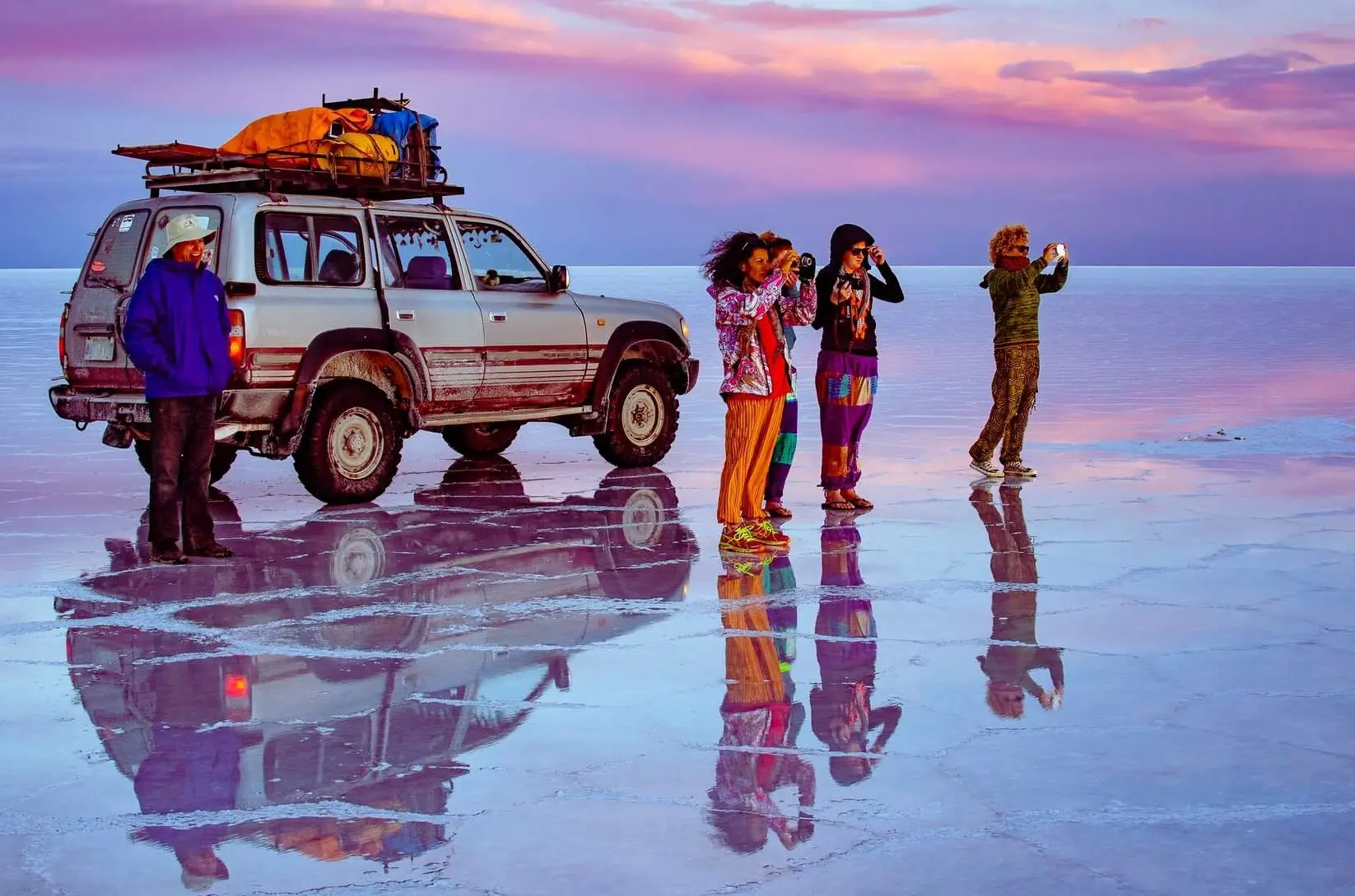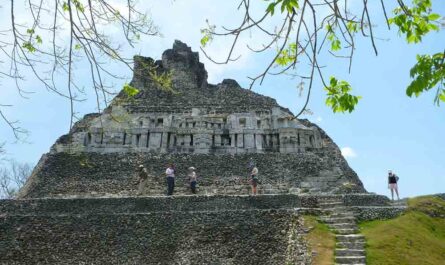What are some of the interesting facts about Bolivia? Bolivia, a landlocked country in the heart of South America, is a nation rich in cultural heritage and natural diversity. Known for its dramatic landscapes that range from the soaring peaks of the Andes to the vast, otherworldly expanse of the Salar de Uyuni, Bolivia captivates travelers and scholars alike with its unique blend of history, culture, and biodiversity. The country’s population is a mosaic of ethnic groups, with a significant proportion of indigenous people who maintain their traditional customs and languages, contributing to Bolivia’s vibrant cultural tapestry. In this article, I will talk about some interesting facts about Bolivia.
Interesting Facts About Bolivia: History, Culture, Travel
Bolivia’s political landscape has been shaped by a tumultuous history of colonization, independence, and social reform, making it a fascinating case study for those interested in Latin American politics and society. Economically, Bolivia is rich in natural resources, including minerals like tin and lithium, which play crucial roles in the global market. Despite challenges such as poverty and political instability, Bolivia’s resilience and spirit are evident in its ongoing efforts to achieve sustainable development and social justice. Here are some interesting facts about Bolivia:
1. Land of Contrasts
Bolivia is a country of remarkable and striking contrasts, presenting some of the most dramatic landscapes found anywhere on Earth. From the towering, snow-capped peaks of the Andes, which cut through the western part of the country, to the vast, lush expanses of the Amazon rainforest that blanket the east, Bolivia’s geography is incredibly diverse and visually stunning. Among its natural wonders is Lake Titicaca, the highest navigable lake in the world.
This immense body of water, sitting at over 12,500 feet above sea level, straddles the border between Bolivia and Peru. The lake is not only a geographical marvel but also a cultural and historical treasure, revered by the ancient Incan civilization and still holding deep spiritual significance for the indigenous people today. Traveling across Bolivia, one can experience everything from the dry, surreal salt flats of Salar de Uyuni, which stretch as far as the eye can see, to the humid and biodiverse jungles teeming with exotic wildlife. These varied landscapes offer a dramatic contrast to each other, creating a unique and awe-inspiring tapestry that showcases the incredible natural beauty and ecological richness of Bolivia.
2. Salar de Uyuni: A Marvelous Salt Flat
Salar de Uyuni, spanning over an astonishing 10,582 square kilometers, stands as an unparalleled natural wonder, captivating the imagination with its vastness and surreal beauty. As the largest salt flat on the planet, it presents a landscape that seems to stretch endlessly to the horizon, devoid of any vegetation or relief, creating a mesmerizing expanse of white. Particularly enchanting is the phenomenon that occurs after rain, when a thin layer of water transforms the flat into a giant mirror, perfectly reflecting the sky above.
This mirror-like effect creates an otherworldly illusion of infinity, where the boundaries between earth and sky blur, leaving visitors in a state of awe and wonder. The Salar de Uyuni is not merely a geographical feature but a canvas upon which nature paints its most extraordinary and evocative landscapes, inviting contemplation and reflection amidst its ethereal beauty.
3. Indigenous Heritage
Bolivia proudly boasts the largest indigenous population in South America, a testament to the enduring legacy of ancient cultures that have shaped its traditions, beliefs, and way of life. Among these indigenous peoples, the Aymara and Quechua stand out, with their rich cultural heritage deeply ingrained in Bolivia’s national identity. Their languages, customs, and spiritual practices continue to be celebrated and preserved, serving as a vibrant tapestry of diversity that enriches the fabric of Bolivian society.
From colorful festivals and traditional clothing to age-old rituals and ceremonies, Indigenous culture permeates every aspect of Bolivian life, weaving a thread of connection between past and present. Despite centuries of colonization and cultural assimilation, indigenous communities in Bolivia have maintained a resilient spirit and a profound connection to their ancestral lands, serving as guardians of traditional knowledge and custodians of the country’s natural and cultural heritage.
4. The Mighty Andes
The Andes Mountains, with their towering peaks and rugged beauty, form Bolivia’s western border, serving as both a majestic backdrop and an outdoor playground for adventurers and nature enthusiasts alike. Stretching over 7,000 kilometers along the spine of South America, the Andes offer a wealth of opportunities for exploration, from gentle hikes through picturesque valleys to challenging climbs up formidable summits. In Bolivia, the Andes present a landscape of unparalleled diversity, with snow-capped peaks, deep gorges, and high-altitude plateaus that harbor unique ecosystems and endemic species.
For those seeking adventure, the Andes provide an exhilarating playground, offering everything from mountain biking along ancient Inca trails to trekking through remote wilderness areas where few have ventured before. But beyond its recreational opportunities, the Andes also hold a deep spiritual significance for the indigenous peoples of Bolivia, who regard these mountains as sacred and imbued with powerful energy. Thus, the Andes serve not only as a natural wonder but as a cultural and spiritual touchstone that continues to inspire awe and reverence in all who encounter them.
5. A Multitude of Languages
In Bolivia, language is a vivid tapestry reflecting the country’s deep cultural diversity and rich history. While Spanish is the official and most widely spoken language, Bolivia recognizes a staggering 37 indigenous languages. This linguistic diversity is a testament to the country’s commitment to honoring and preserving its rich cultural heritage. Among these languages are Quechua and Aymara, spoken by significant portions of the population, alongside lesser-known tongues such as Guarani and Bésiro.
This multitude of languages is not just a matter of communication but a living, breathing part of Bolivia’s identity. Each language carries with it unique traditions, stories, and ways of seeing the world, contributing to a vibrant and varied cultural landscape. In schools across the country, efforts are made to teach children in both Spanish and their native languages, ensuring that these cultural treasures are passed down to future generations. This linguistic diversity is celebrated in festivals, music, and daily life, making Bolivia a fascinating place where multiple cultural threads are woven together into a rich and colorful tapestry.
6. Delicious Dishes
Bolivian cuisine is a delightful fusion of indigenous flavors and Spanish culinary traditions, resulting in a rich tapestry of dishes that tantalize the taste buds and satisfy the soul. Among the must-try delicacies are Salteñas, savory pastries filled with a hearty mixture of meat, potatoes, and vegetables, wrapped in a flaky pastry crust and baked to golden perfection. These handheld treats are beloved across Bolivia, often enjoyed as a quick snack or hearty meal on the go.
Another culinary gem is Silpancho, a hearty dish featuring thin, breaded, and fried beef or llama cutlets served atop a bed of fluffy rice and topped with fried eggs, onions, and a zesty tomato salsa. The combination of crispy meat, tender rice, and bold flavors creates a symphony of taste sensations that embodies the essence of Bolivian comfort food. Whether you’re exploring the bustling markets of La Paz or dining in a cozy family-run restaurant in Sucre, sampling these traditional dishes is an essential part of experiencing the vibrant culinary culture of Bolivia.
7. Lake Titicaca’s Enchantment
Lake Titicaca, nestled high in the Andes and bordering Peru, holds a special place in the hearts of both Bolivians and Peruvians, enchanting visitors with its serene beauty and rich cultural heritage. As the world’s highest navigable lake, its crystal-clear waters shimmer beneath the sun, reflecting the surrounding snow-capped peaks in a breathtaking panorama of natural splendor. But it’s not just the stunning scenery that makes Lake Titicaca so captivating; it’s also the unique cultural traditions that have flourished along its shores for centuries.
One of the most remarkable sights is the floating islands of the Uros people, made entirely of totora reeds that grow abundantly in the shallow waters of the lake. These man-made islands, which have been inhabited for generations, offer a glimpse into a way of life that has remained largely unchanged for centuries. Visitors can explore these fascinating floating communities, learning about the Uros’ traditional fishing techniques, handicrafts, and customs, and gaining a deeper appreciation for the enduring connection between the people and the lake that sustains them.
8. Home of the Umaña Spa
Perched high in the Bolivian Andes near the town of Sajama lies the Umaña Spa, a hidden gem and the world’s highest commercial spa. Here, amid the rugged beauty of the altiplano landscape, visitors can indulge in a truly unique bathing experience, surrounded by panoramic views of snow-capped peaks and vast expanses of untouched wilderness. The spa’s thermal pools, fed by natural hot springs, offer a rejuvenating soak that soothes the body and soul, providing relief from the high-altitude chill and invigorating tired muscles.
As guests soak in the warm waters, they can marvel at the stark beauty of their surroundings, breathing in the crisp mountain air and feeling a profound sense of peace and tranquility wash over them. Whether you’re seeking relaxation, adventure, or simply a moment of quiet contemplation, the Umaña Spa offers a sanctuary unlike any other, where you can reconnect with nature and yourself in a setting of unparalleled natural beauty.
9. The Fascinating Nazca Lines
While technically located in Peru, the enigmatic Nazca Lines are easily accessible from southern Bolivia, sparking intrigue and speculation about their origins and purpose. Etched into the arid desert landscape of the Nazca Plateau, these mysterious geoglyphs take the form of intricate designs, including geometric shapes, animals, and humanoid figures, some of which stretch for hundreds of meters across the desert floor. The precise method by which these ancient drawings were created, as well as their significance to the culture that produced them, remains a subject of debate among archaeologists and historians.
Some theories suggest that the lines served as ceremonial pathways or astronomical calendars, while others propose more esoteric interpretations involving extraterrestrial contact or ancient religious rituals. Whatever their true purpose may have been, the Nazca Lines continue to captivate the imagination of visitors from around the world, inviting them to ponder the mysteries of the past and marvel at the ingenuity of the ancient civilizations that once thrived in this remote corner of South America.
10. Unique Carnival Celebrations
Carnival in Bolivia is a joyous and exuberant celebration that bursts with color, music, and revelry, drawing communities together in a whirlwind of festive energy. Each region of the country puts its own unique spin on the festivities, resulting in a kaleidoscope of traditions and customs that reflect Bolivia’s diverse cultural heritage. From the lively street parades of Oruro to the water fights of Cochabamba, Carnival is a time for people to shed their inhibitions and immerse themselves in the joyous spirit of celebration.
Elaborate costumes adorned with sequins and feathers, vibrant folkloric dances accompanied by rhythmic drumbeats, and the playful splashing of water all contribute to the electric atmosphere of Carnival in Bolivia. It’s a time when the streets come alive with laughter and music, and strangers become friends as they join together to dance, sing, and revel in the infectious joy of the festivities.
11. The Enigmatic Tiwanaku Ruins
Nestled amidst the stark altiplano landscape of Bolivia lies the ancient city of Tiwanaku, a UNESCO World Heritage Site that predates the mighty Inca Empire and stands as a testament to the advanced civilization that once thrived in the region. The ruins of Tiwanaku are shrouded in mystery and intrigue, with massive stone structures and intricate carvings that hint at the architectural and artistic prowess of its builders.
From the imposing Akapana pyramid to the enigmatic Gate of the Sun, the site is a treasure trove of archaeological wonders, offering visitors a glimpse into the ancient past of South America. Wander among the weathered ruins, and you’ll feel as though you’ve stepped back in time, surrounded by the echoes of a bygone era. Despite centuries of erosion and plunder, the ruins of Tiwanaku continue to captivate and inspire, inviting visitors to ponder the enigmatic legacy of this ancient civilization and marvel at the enduring mysteries of the past.
12. The Importance of Football (Soccer)
Football, known as soccer in some parts of the world, holds a special place in the hearts of Bolivians, transcending social divides and uniting people in a shared passion for the beautiful game. From the bustling streets of La Paz to the remote villages of the altiplano, football is more than just a sport; it’s a cultural phenomenon that brings communities together and ignites fervent national pride.
Every match is an opportunity for Bolivians to rally behind their favorite teams, whether local clubs or the national squad, and to express their unwavering support through chants, cheers, and colorful displays of team colors. Football stadiums become hallowed grounds, where fans gather to witness the drama and excitement unfold on the pitch, cheering their heroes to victory and commiserating in defeat. For many Bolivians, football is not just a pastime but a way of life, permeating every aspect of society and providing a source of joy, camaraderie, and shared identity that transcends cultural, ethnic, and socioeconomic differences.
13. The Captivating Sajama Peak
Nevado Sajama stands as a towering symbol of Bolivia’s natural beauty and majesty, casting its imposing silhouette against the backdrop of the altiplano landscape. As the highest mountain in Bolivia, this snow-capped volcano commands attention and awe, drawing adventurers and nature lovers from around the world to its lofty summit. Its dramatic slopes and rugged terrain offer a challenging yet rewarding climb for experienced mountaineers, while its pristine beauty and serene surroundings provide a sanctuary for those seeking solace in the embrace of nature.
From the shimmering shores of Lake Chungará to the windswept plains of the Sajama National Park, the mountain’s influence extends far beyond its towering peak, shaping the landscape and culture of the region. For centuries, Nevado Sajama has been revered as a sacred site by indigenous peoples, who regard it as a spiritual guardian and source of strength. Today, it remains a captivating symbol of Bolivia’s natural heritage and a testament to the enduring power of the mountains to inspire wonder and reverence in all who behold them.

14. The Uyuni Train Cemetery
Deep in the desolate expanse of the Bolivian altiplano lies a haunting reminder of the country’s industrial past: the Uyuni Train Cemetery. Here, amidst the vast emptiness of the high desert, a collection of abandoned steam locomotives rusts silently beneath the relentless sun, their skeletal frames standing as ghostly sentinels of a bygone era. These rusting relics, remnants of Bolivia’s once-thriving mining industry, evoke a sense of nostalgia and melancholy, offering a glimpse into the country’s rich history and industrial heritage. For visitors, the Uyuni Train Cemetery is a surreal and captivating sight, where time seems to stand still amidst the crumbling ruins of a bygone era.
Against the backdrop of the expansive salt flats of Salar de Uyuni, the train graveyard creates a stark and eerie landscape that stirs the imagination and invites contemplation of the passage of time and the impermanence of human endeavors. Despite its desolation, the Uyuni Train Cemetery remains a poignant reminder of Bolivia’s industrial past and a testament to the resilience of the human spirit in the face of adversity.
15. The Intricate Textiles
Traditional Bolivian textiles are a feast for the eyes, renowned for their vibrant colors, intricate patterns, and rich symbolism that reflect the country’s diverse cultural heritage. Woven with care and skill by local artisans using traditional techniques passed down through generations, these textiles are more than just pieces of fabric; they are works of art that tell stories of tradition, identity, and community. Each textile carries with it a wealth of meaning and symbolism, from the geometric patterns that represent the rhythms of nature to the vibrant hues that evoke the colors of the Andean landscape.
Whether worn as clothing, used as decorations, or displayed as works of art, Bolivian textiles serve as a tangible expression of cultural pride and a connection to the country’s rich history and traditions. From the intricately woven ponchos of the highlands to the brightly embroidered skirts of the valleys, these textiles are a testament to the creativity, craftsmanship, and ingenuity of the Bolivian people, preserving and celebrating their cultural heritage for generations to come.
16. The Importance of Coca Leaves
Coca leaves hold a significant place in Bolivian culture, deeply intertwined with the traditions and practices of indigenous communities for centuries. Despite their association with cocaine production in popular culture, coca leaves have been traditionally used by indigenous peoples for medicinal and ceremonial purposes long before the advent of modern narcotics. For these communities, coca is a sacred plant, revered for its healing properties and spiritual significance.
When chewed or brewed into tea, coca leaves provide a mild stimulant effect, helping to combat fatigue, alleviate altitude sickness, and increase endurance. Additionally, coca plays a central role in Andean rituals and ceremonies, symbolizing a connection to the natural world and serving as an offering to the gods. While the illicit production of cocaine remains a contentious issue, it’s essential to recognize the cultural and historical significance of coca leaves in Bolivian society, separate from their association with drug trafficking.
17. The Intriguing Pink Dolphin
In the labyrinthine waterways of the Amazon basin tributaries within Bolivia, an enchanting and elusive creature roams: the pink river dolphin, also known as the Bolivian river dolphin. These remarkable mammals, with their distinctive pink hue and graceful movements, captivate the imagination with their mysterious presence in the murky waters of the Amazon. Unlike their ocean-dwelling relatives, pink river dolphins have adapted to freshwater habitats, navigating the complex network of rivers and streams that crisscross the dense Amazon rainforest.
Revered by indigenous cultures as spiritual beings with mystical powers, pink dolphins hold a special place in Bolivian folklore and mythology. Yet, they face threats from habitat loss, pollution, and human encroachment, making their conservation a matter of urgent concern. Efforts to protect these enigmatic creatures and their fragile ecosystems are essential to ensuring the continued survival of this iconic symbol of the Amazon’s rich biodiversity.
18. The Fascinating Death Road
The North Yungas Road, famously nicknamed “Death Road,” has earned a notorious reputation as one of the world’s most perilous routes, etched precariously into the mountainside of Bolivia’s Yungas region. Its narrow, winding path, often no wider than a single vehicle, hugs the steep cliffs of the Andes, plunging thousands of feet into the abyss below. For decades, it claimed the lives of countless travelers, earning its ominous moniker and becoming the stuff of legend among adventurers and thrill-seekers. However, in recent years, significant safety improvements have been made to mitigate the risks associated with traversing this treacherous terrain.
Today, while still retaining its allure for adrenaline junkies, the Death Road offers a safer yet equally exhilarating experience for intrepid cyclists. Guided cycling tours provide an opportunity to pedal along the dramatic route, taking in breathtaking views of the rugged Andean landscape while navigating its hairpin turns and sheer drop-offs. It’s a thrilling adventure that combines the adrenaline rush of extreme sports with the awe-inspiring beauty of Bolivia’s natural scenery, offering a once-in-a-lifetime experience for those brave enough to tackle its twists and turns.
19. Rich Mineral Resources
Bolivia’s land is endowed with a wealth of mineral resources, including significant deposits of tin, lithium, silver, and more. These resources have long played a crucial role in the country’s economy, contributing to its wealth and development. Tin, in particular, has been a cornerstone of Bolivia’s mining industry for decades, earning it the nickname “Tin Land.” Additionally, Bolivia holds vast reserves of lithium, a key component in the production of batteries for electric vehicles and renewable energy storage systems. The exploitation of these mineral resources presents both opportunities and challenges for Bolivia.
On one hand, mining activities generate revenue, create jobs, and drive economic growth. On the other hand, they can also have negative environmental and social impacts, including deforestation, water pollution, and displacement of indigenous communities. As Bolivia seeks to balance economic development with environmental conservation and social equity, responsible extraction practices and sustainable resource management are increasingly emphasized to ensure the long-term well-being of both the country and its people.
20. The Traditional Pollera Skirt
The pollera, a vibrant and multi-layered skirt adorned with intricate embroidery and bright patterns, holds deep cultural significance as a symbol of identity and pride for indigenous Aymara women in Bolivia. Worn as everyday attire and for special occasions alike, the pollera is more than just a piece of clothing; it’s a tangible expression of tradition, heritage, and resistance. Each pollera is a unique work of art, handcrafted with care and skill by local artisans using traditional techniques passed down through generations.
Beyond its aesthetic appeal, the pollera serves as a powerful symbol of cultural resilience and resistance to assimilation, asserting the wearer’s indigenous identity in the face of centuries of colonialism and marginalization. Today, the pollera continues to be proudly worn by Aymara women across Bolivia, serving as a vibrant reminder of their rich cultural heritage and a testament to the enduring strength of indigenous traditions in the face of modernity.
21. The Diverse Music Scene
Bolivia’s music scene is a vibrant tapestry woven from a diverse array of influences, reflecting the country’s rich cultural heritage and history of multicultural exchange. At its heart are the distinctive sounds of Andean music, characterized by the haunting melodies of indigenous wind instruments like the charango, quena, and pan flute, accompanied by rhythmic percussion and vocals. These traditional Andean rhythms, rooted in indigenous traditions and beliefs, coexist alongside modern musical styles and genres, resulting in a dynamic and eclectic music scene that defies easy categorization.
From the infectious beats of cumbia and salsa to the soul-stirring melodies of bolero and huayño, Bolivian music encompasses a broad spectrum of styles and influences, each contributing to the country’s rich cultural tapestry. Whether performed in bustling city plazas, intimate village gatherings, or lively street festivals, Bolivian music serves as a powerful expression of identity, community, and belonging, uniting people across generations and cultural divides in a shared celebration of rhythm and melody.
22. Biodiversity Hotspot
Bolivia stands as a true marvel of biodiversity, boasting an astonishing array of plant and animal species that thrive across its varied ecosystems. From the dense, emerald expanses of the Amazon rainforest to the stark, windswept heights of the Andean highlands, Bolivia’s landscapes teem with life in all its forms. The country’s status as a megadiverse nation is evident in its staggering number of endemic species, unique habitats, and ecological niches.
In the Amazon basin alone, Bolivia is home to an estimated 40,000 plant species, as well as a diverse array of mammals, birds, reptiles, and amphibians. Meanwhile, the Andean region harbors iconic species such as the Andean condor, the vicuña, and the spectacled bear, each adapted to thrive in the harsh conditions of high-altitude environments. As custodians of this rich natural heritage, Bolivians recognize the importance of conservation efforts to safeguard their country’s biological wealth for future generations, ensuring that Bolivia remains a haven for biodiversity and a source of wonder and inspiration for all who venture into its wilds.
23. The World’s Largest Producer of Brazil Nuts
Deep within the lush canopy of Bolivia’s Amazon rainforest, towering Brazil nut trees reign supreme, producing one of the world’s most sought-after nuts. Bolivia holds the distinction of being the largest producer of Brazil nuts globally, with vast tracts of rainforest devoted to their cultivation and harvest. The collection of Brazil nuts, which grow in large, spherical pods high above the forest floor, is a labor-intensive process that involves skilled climbers ascending the towering trees to gather the ripened nuts by hand. Once collected, the nuts are cracked open to reveal their delicious, creamy kernels, prized for their rich flavor and nutritional value.
The Brazil nut industry plays a vital role in the local economy, providing income and employment opportunities for thousands of Bolivians living in remote rainforest communities. Moreover, Bolivia’s position as a leading exporter of Brazil nuts contributes to international trade and global food security, ensuring that these delectable nuts find their way to markets around the world, delighting palates and nourishing bodies with their natural goodness.
24. The Fight for Sea Access
The loss of its coastline in the War of the Pacific in the late 19th century left Bolivia landlocked, a geopolitical reality that continues to shape the country’s identity and aspirations to this day. Despite being surrounded by land, Bolivia maintains a deep-seated desire for sea access, viewing it as a matter of national pride and historical justice. Each year, Bolivia commemorates its longing for a return to the sea with a symbolic “Navy Day,” honoring the sacrifices made by those who fought in the War of the Pacific and reaffirming the country’s unwavering commitment to regaining access to the ocean. While diplomatic efforts to resolve the longstanding territorial dispute with neighboring Chile have yet to yield a resolution, the quest for sea access remains a potent symbol of Bolivia’s determination to reclaim its place among maritime nations and assert its rightful place on the world stage. Health books, guides, exercises, habits, Diets, and more
25. Two Capital Cities
Bolivia is unique in that it has two capital cities, each serving a different purpose and adding to the country’s intriguing political landscape. Sucre is the constitutional capital and the symbolic heart of the nation, housing the country’s judiciary and serving as a reminder of Bolivia’s colonial past and independence. Its beautiful white-washed buildings and historic architecture tell the story of Bolivia’s rich history and cultural evolution. On the other hand, La Paz, the administrative capital, is where the president resides and where the executive and legislative branches of government operate.
Nestled high in the Andes, La Paz boasts the highest elevation of any capital city in the world, sitting at roughly 11,975 feet above sea level. This lofty altitude means that the air is thin, and visitors often experience breathlessness until they acclimatize. The city’s dramatic setting, in a deep valley surrounded by mountains, is as striking as it is unique. These two capitals reflect Bolivia’s dual heritage and complexity, blending historical significance with modern governance. The existence of both cities as capitals underscores the country’s commitment to preserving its historical roots while also managing the practicalities of contemporary administration.



